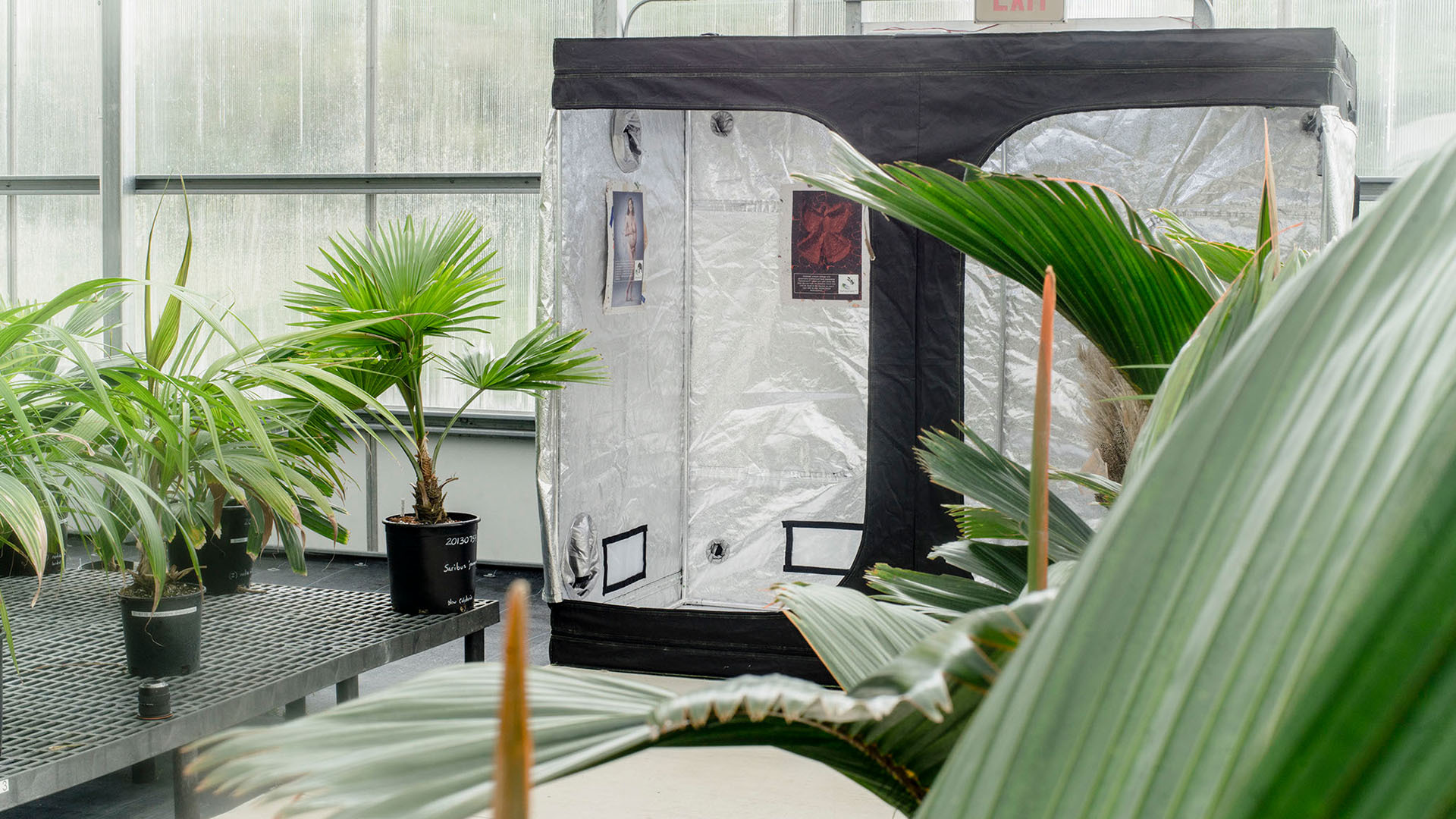
The Critter Issue
Talk to Your Doctor
CRISPR-Cas9: a gene editing technique that allows geneticists and medical researchers to edit part of a human or animal genome by modifying, removing, or adding in sections of a DNA sequence. The technology, an acronym for Clustered Regularly Interspaced Short Palindromic Repeats was first described by Japanese researchers in 1987.
Now, over three decades into the future, CRISPR has evolved into a relatively cheap, precise, reliable, and versatile technology for inter-species adaptation. Researchers say the technology may soon help us prevent a wide array of genetic diseases that have long vexed human society. But what of the dark side to inter-species adaptation?
In her latest diptych, artist Loney Abrams ponders CRISPR’s more ominous future. Could techniques like CRISPR one day fundamentally redefine what it means to be human? Are we headed toward a future where gene-editing can be used to create a race of superhumans, enriched by the useful traits of non-human lifeforms?
In an era defined by climate change and a near future that threatens tens of millions of climate refugees over the next decade, which critter qualities will we truly covet?
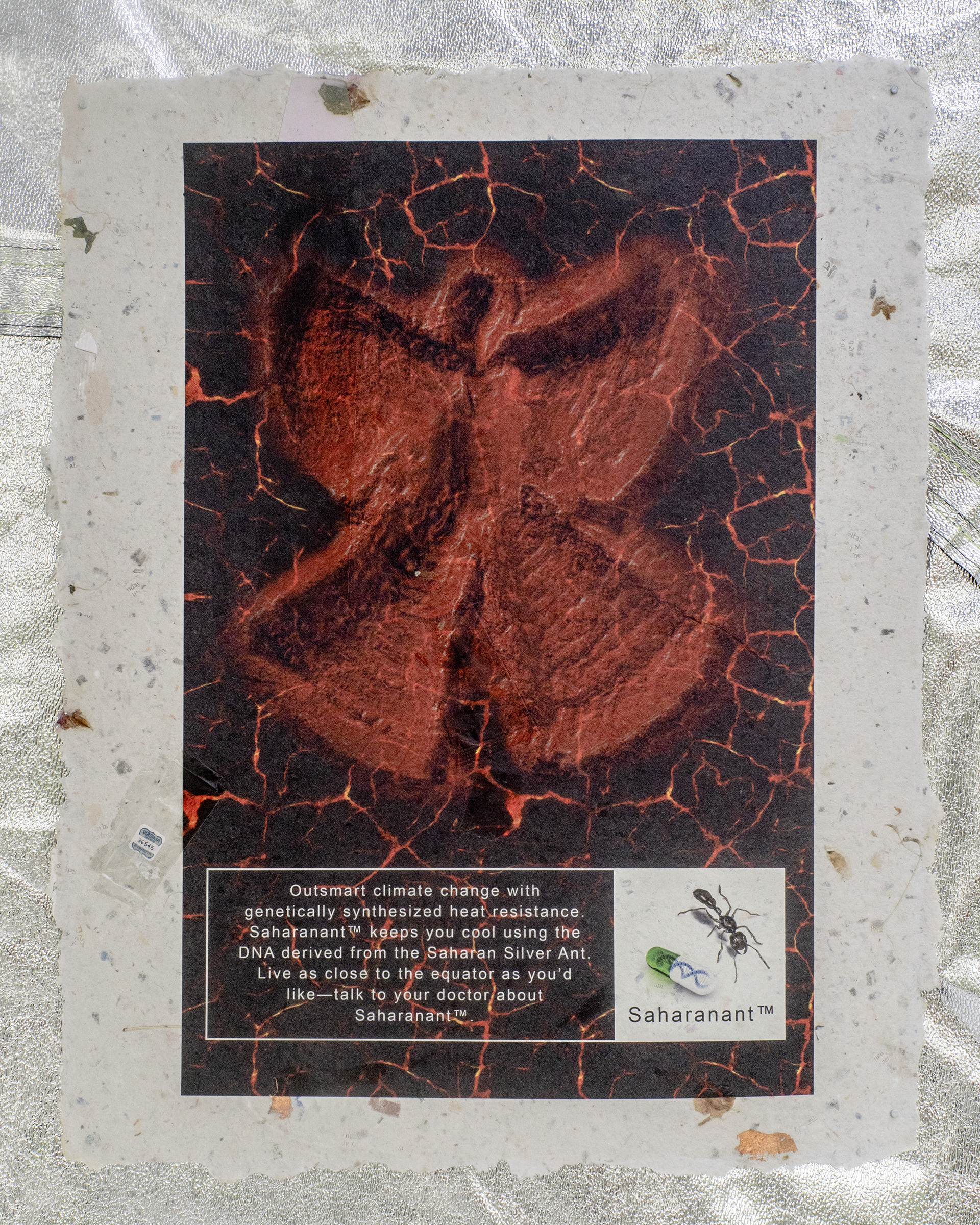
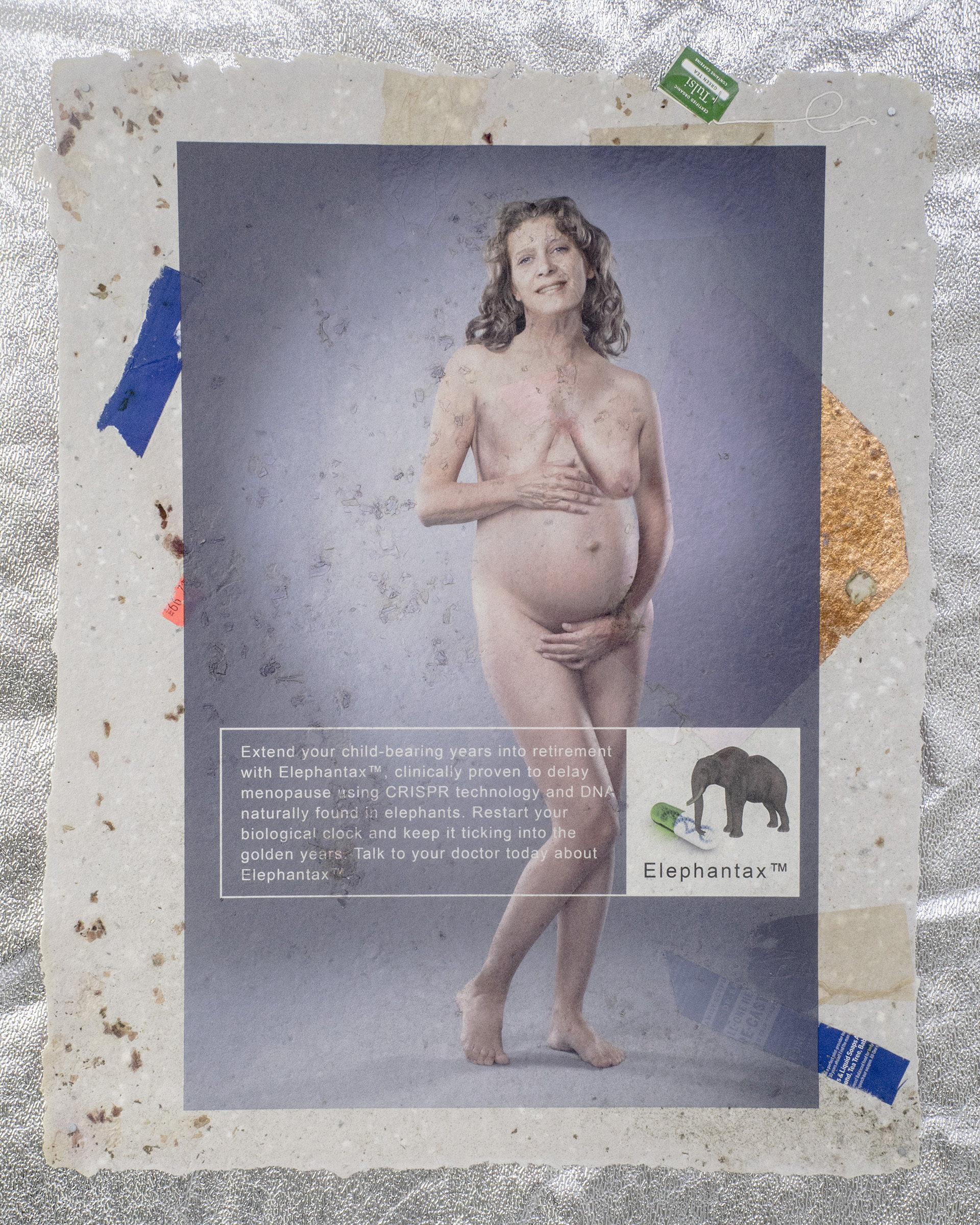
Left: Outsmart climate change with genetically synthesized heat resistance. Saharanant™ keeps you cool using the DNA derived from the Saharan Silver Ant. Live as close to the equator as you’d like — talk to your doctor about Saharanant™.
Loney Abrams and Johnny Stanish, Saharant™ (2017) and Elephantax™ (2017). UV print on handmade paper (Left: pulped Wall Street Journal, copper foil, sunscreen, incense wrapper, price tag, RAW rolling paper, magnesium chloride bath salts, dandelion root, chrysanthemum buds. Right: pulped New York Times, copper foil, Dr. Bronner's soap label, Every Day Detox Tea, RAW rolling papers, anti-aging serum, milk thistle root, rose petals, magnesium chloride bath salts, Electrolyte Plus+ powder, bee pollen). Images courtesy of the artists and Pretty Days/Bas Fisher Invitational.

Right: Extend your child-bearing years into retirement with Elephantax™, clinically proven to delay menopause using CRISPR technology and DNA natural found in elephants. Restart your biological clock and keep it ticking into the golden years. Talk to your doctor today about Elephantax™.
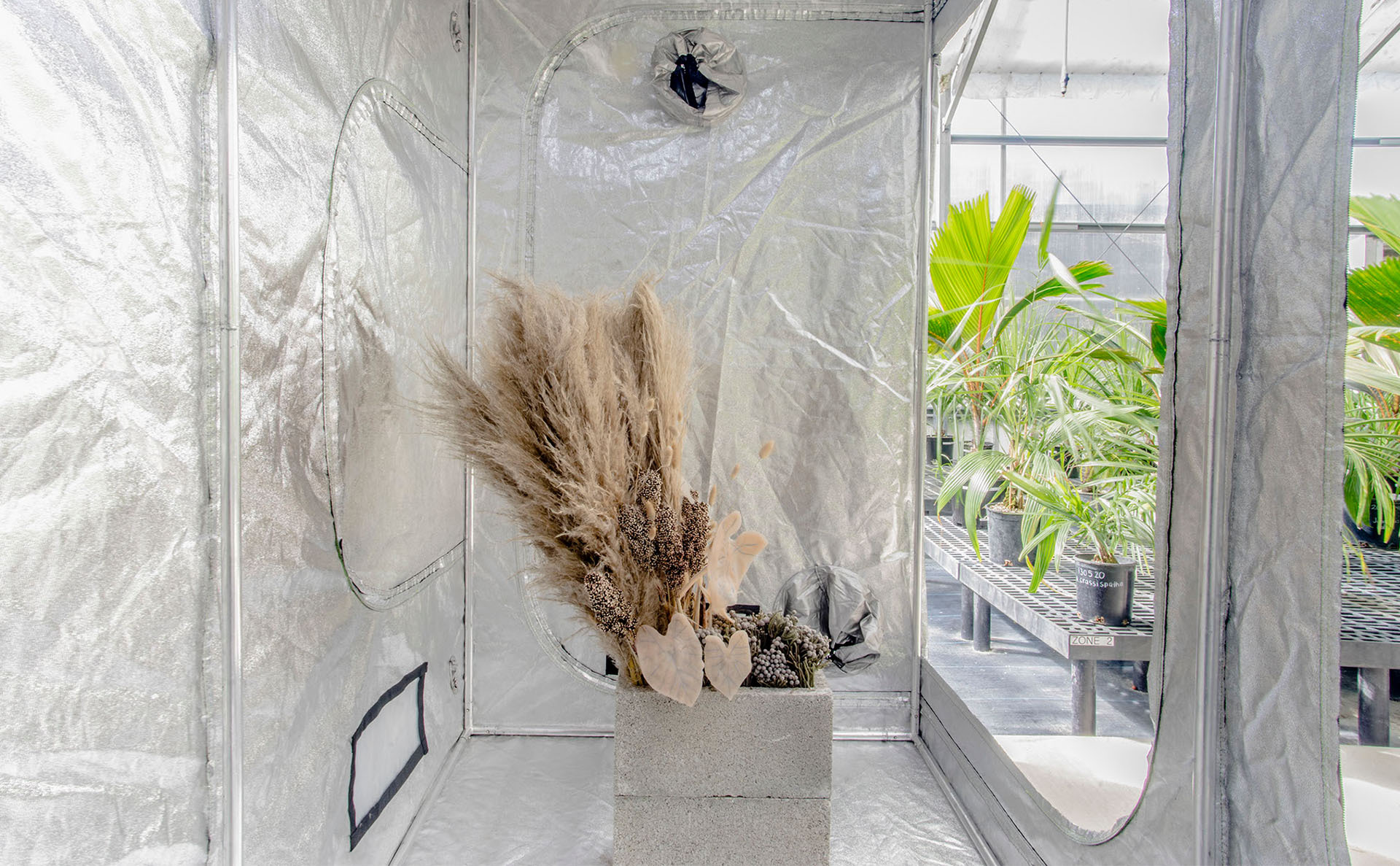
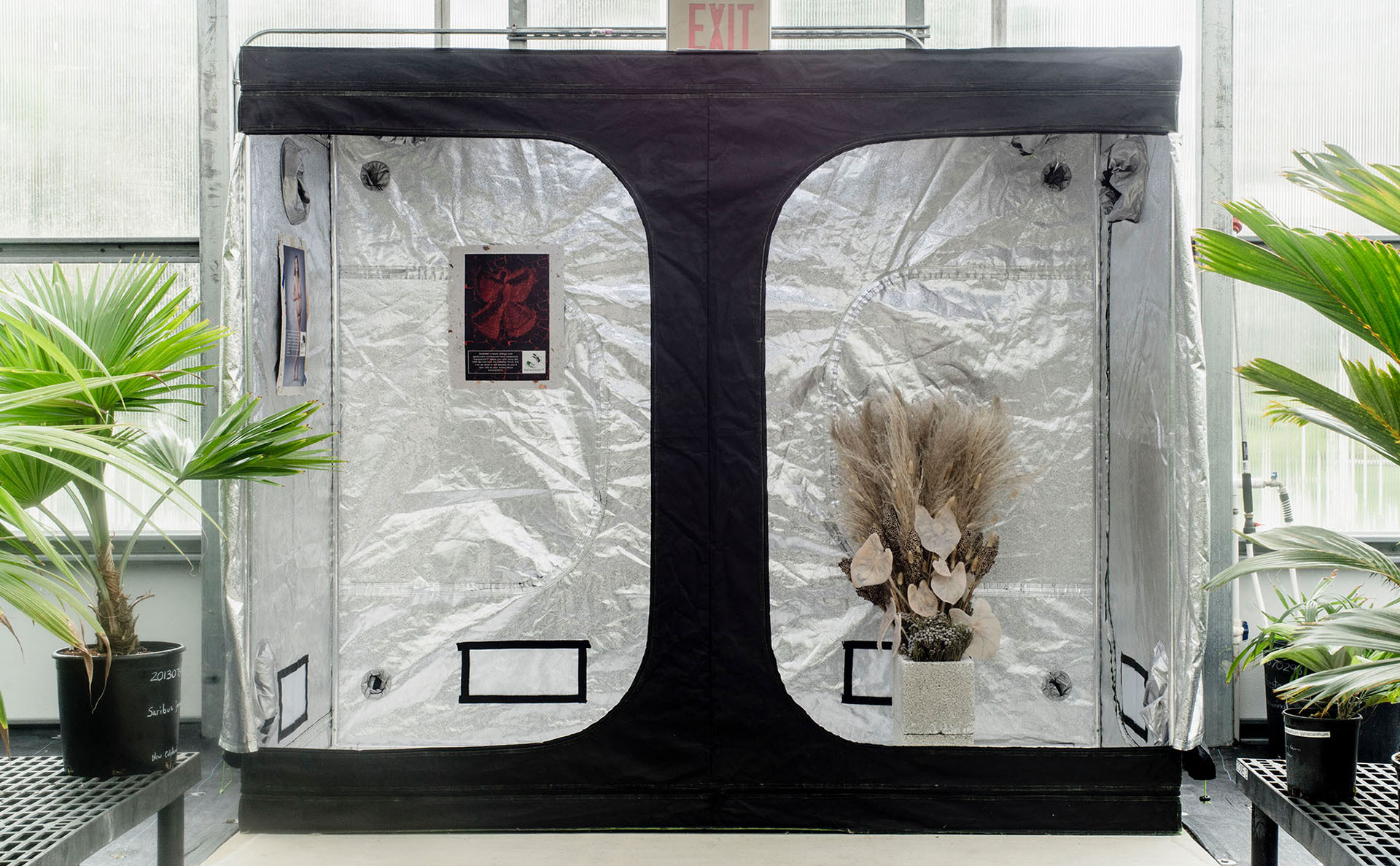
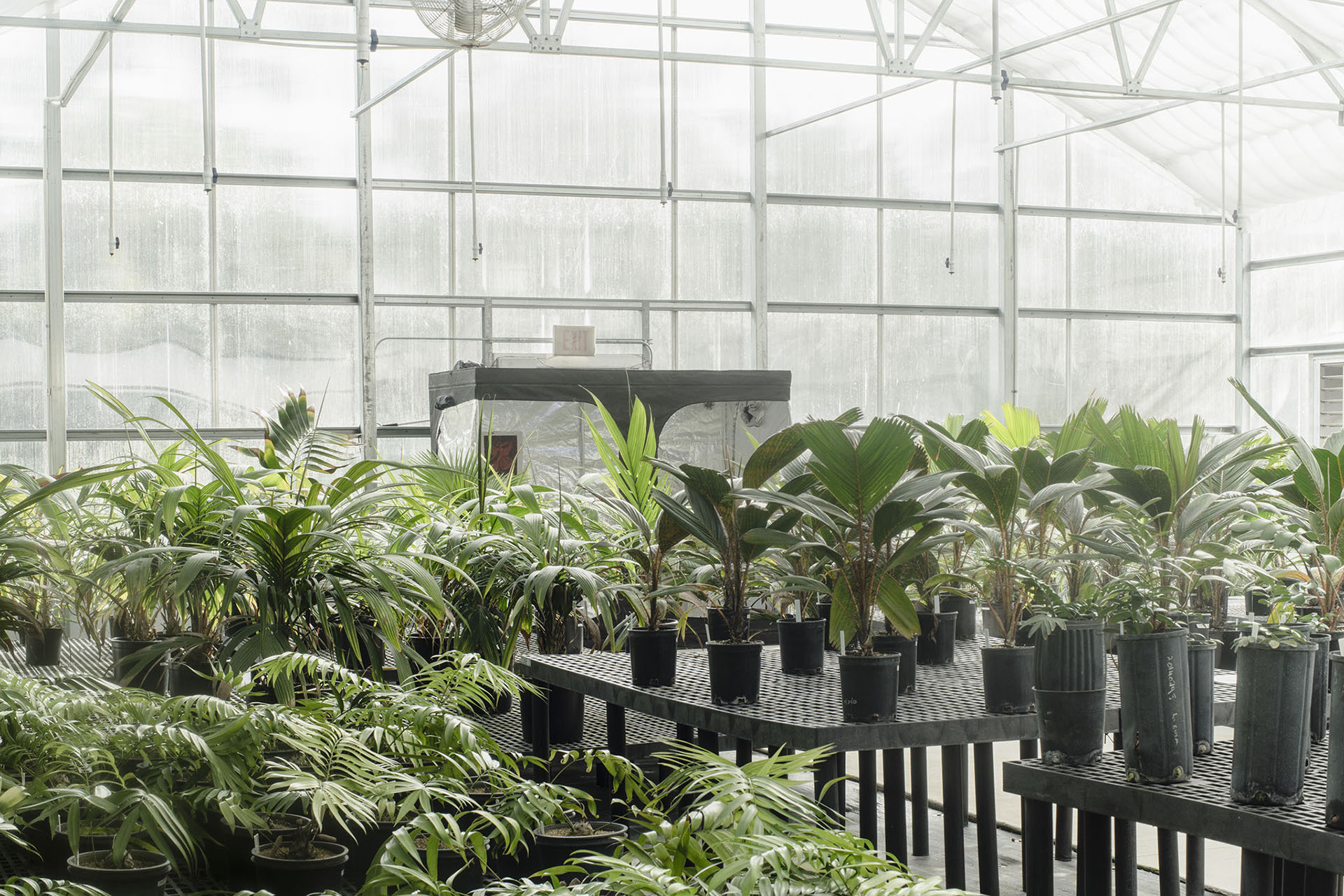
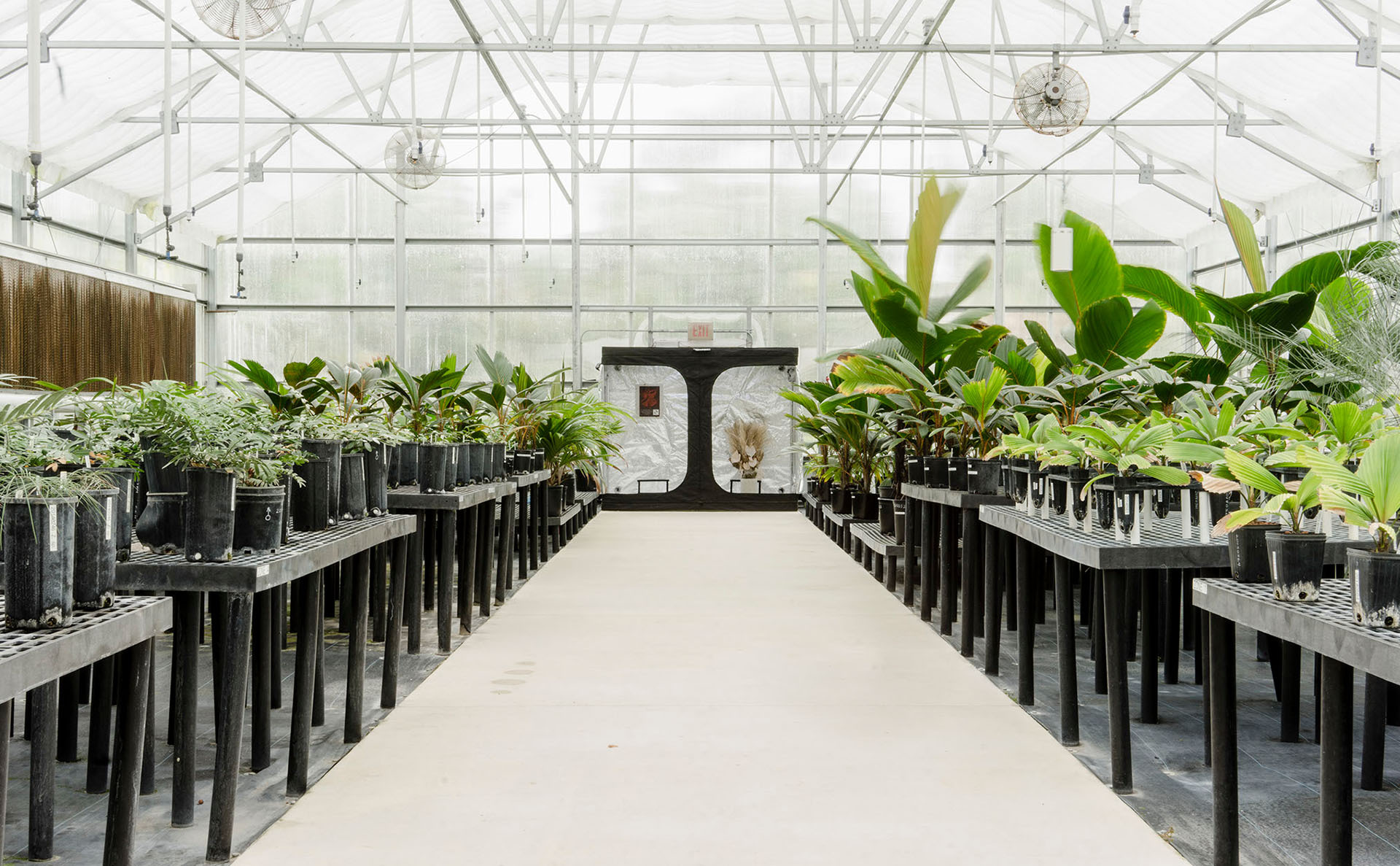
Loney Abrams is a New York-based artist who works collaboratively with Johnny Stanish. Recent solo shows include Bass Fisher Invitational, Sadie Halie Projects, and Knock Down Center. Recent group shows include Alyssa Davis Gallery, 315 Gallery, Greenpoint Terminal Gallery, Regina Rex, Et. Al., Ashes/Ashes, Naughton Gallery, and Material Art Fair.
Loney Abrams is a New York-based artist who works collaboratively with Johnny Stanish. (www.theretherebiz.biz). Recent solo shows include Bass Fisher Invitational in Miami curated by Ana Frost and Pretty Days, Sadie Halie Projects in Minneapolis, and Knock Down Center in New York. Recent group shows include Alyssa Davis Gallery, 315 Gallery, Greenpoint Terminal Gallery, and Regina Rex in New York; Et. Al. in San Francisco; Ashes/Ashes in Los Angeles; Naughton Gallery at Queens University in Belfast; Prarie in Chicago; and Material Art Fair in Mexico City. Abrams is a visiting associate professor at Pratt Institute, where she received her MFA in 2013. Abrams co-directs Hotel Art Pavilion, a gallery founded in 2012 and based primarily in Brooklyn
Photos from “Edits: Pretty Days and Bas Fisher Invitational co-curated by Anna Frost, Montgomery Bontanical Center Miami, FL, November 2017”